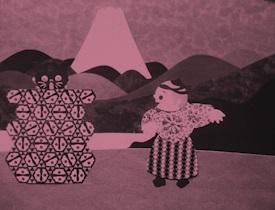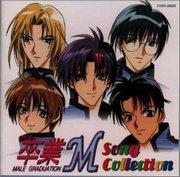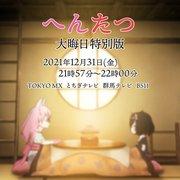Osekisho: The appeal and reputation of an anime that combines history and drama

"Osekisho": A work that marks the dawn of Japanese animationOverview"Osekisho" is a Japanese animated film released in 1930. It was released in theaters and is based on an original anime. It was distributed by Chuo Eigasha and produced by Chiyogami Eigasha and Ofuji Nobuo. Although it is a short film with only one episode and 17 minutes, it is packed with dense content. storyA troupe of traveling performers arrives at a checkpoint in the mountains of Hakone. As they don't have a pass, they are caught by the guard. However, a stylish official appears and offers to let them through if they perform a trick instead of the pass. A monkey show, Chinese magic tricks, and a band performance unfold, and in the end, even the official at the checkpoint is excited and starts dancing, and the traveling performers are able to pass through the checkpoint. This story is described on page 202 of the History of Japanese Animation Films. Commentary"Osekisho" was produced as a talkie (Easthorn) dyed and toned version. This information is also written in the History of Japanese Animation Films, p. 202. A talkie is a film with sound, and it is a work that reflects the technological innovations of the time. Also, dyed and toned versions are a technique for achieving colorful images, and were used to enhance the visual appeal. BackgroundThe 1930s in Japan was a time when animation films were still in their infancy. "Osekisho" is highly regarded as a work that combines technical challenge with artistic expression. In particular, the use of talkies and dye-and-color printing was a pioneering attempt in the Japanese animation world at the time, and had a major influence on later works. Characters and SettingsThe characters in "Osekisho" are centered around a troupe of traveling performers and the officials at the checkpoint. The traveling performers perform a wide variety of acts, including monkey shows, Chinese magic tricks, and musical performances. These characters reflect the diversity of performing arts in Japanese society at the time, and the play is full of visual delights. Meanwhile, the officials at the checkpoint are portrayed as full of humanity, as they fulfill their strict roles but are ultimately moved by the power of art. Visuals and MusicThe visuals of "Osekisho" are characterised by their rich colour expression, achieved through the use of dye-tone printing plates. Colours are used particularly effectively in the performance scenes of the travelling performers, creating a strong visual impact. Also, as this film was produced as a talkie, the music and sound effects play an important role in livening up the story. Upbeat music plays during the monkey show and Chinese magic trick scenes, while lively tones resonate throughout the band performance scenes. This fusion of visuals and music enhances the appeal of "Osekisho". Evaluation and impact"Osekisho" is one of the most highly acclaimed Japanese animation films of the 1930s. The reason for this is that it pursued both technical innovation and artistic expression. The adoption of talkies and dye-and-color printing showed new possibilities in the Japanese animation world at the time, and had a major influence on later works. The story itself also depicts a universal theme of moving people's hearts through the power of art, and was able to move viewers. Recommendations and related worksI highly recommend watching "Osekisho." It is a must-see, especially for those interested in the history and technical evolution of animation films. It is also recommended for those who want to be moved by the power of art and performance. Related works include "Momotaro: Sea God Soldiers" and "Lassie," Japanese animation films from the 1930s. These works are also known as masterpieces that combine technical challenges with artistic expression, and watching them together with "Osekisho" will give you a deeper understanding of the appeal of Japanese animation from that time. summary"Osekisho" is a Japanese animated film released in 1930 that combines technical innovations using talkies and dye-and-printing with artistic expression that moves people's hearts through the power of art. The story of a troupe of traveling performers and the officials at the checkpoint is full of visual and audio elements that move the audience. By watching "Osekisho," you can experience the charm of Japanese animation from the 1930s. |
<<: My Ski: A look at the unique characters and story
>>: The appeal and reviews of "Kuro Nyago": Unraveling the mysteries of darkness and cats
Recommend
"Dragon Quest: Dar's Adventure" TV animation new art and new theme song will be launched on October 2
The new TV animation of the classic anime "D...
Investing in "Changjin Lake" has a return of several times? Many people were deceived and lost all their money
As one of the oldest professions, the scam indust...
VANDREAD review: The appeal of space adventure and combat
Vandread - A story of a man and a woman who met a...
Kemono Friends 2: Did the highly anticipated sequel live up to expectations?
Kemono Friends 2 - A New Adventure in Japari Park...
Heroic Age: Epic space adventures and character depth exploration
Heroic Age - A spectacular space tale and its cha...
Rick actor says The Suicide Squad is both absurd and touching
The long-awaited "Suicide Squad" by DC ...
Threezero's "One Punch Man" Garou 1/6 figure is priced at 13,600 yen
The famous model manufacturer Threezero has launc...
Gaga's new film "Gucci Family" released the official Chinese subtitles trailer
The official Chinese-subtitled trailer for Lady G...
"Secret Invasion" opening video was produced using AI, and industry designers criticized it
Hollywood screenwriters are currently on strike f...
The movie "Undead King" is about to be released. The author watched it in advance and lamented that it was too beautified
The new animated film theater version of the popu...
Another adaptation! Disney will make a real-life version of "Robin Hood" directly on the streaming media
As a long-standing source of Hollywood adaptation...
"Neon Genesis Evangelion" special trailer reviews classic scenes in 11 languages
Amazon Prime Video will release the membership ve...
Matsumoto Kiyoshi and Osomatsu-san collaboration: what are the unique products and appeal to fans?
Matsumotokiyoshi x Osomatsu-san - The appeal of a...
The appeal and reviews of "STRAIT JACKET": A deep dive into the world of magic and fighting
"Strait Jacket": A fierce battle unfold...
The main characters of the first stage play of "Kingdom" are revealed and will be performed in February 2023
The classic anime series "Kingdom" has ...









